ASUS Z97-DELUXE (NFC & WLC) Review: With Two Thunderbolt 2 Too
by Ian Cutress on May 16, 2014 11:00 AM EST- Posted in
- Motherboards
- Intel
- Asus
- NFC
- 802.11ac
- Thunderbolt 2
- Z97
- Wireless Charging
ASUS Z97-DELUXE Software
The AI Suite package from ASUS is still progressing as the main interface for all of the software features on ASUS motherboards. The interface for the Z97 version is mostly similar to the Z87 package, however the move from Dual Intelligent Processors v4 to v5 adds another element into the equation. One of the big updates to the package is the Turbo App feature that allows users to define specific overclock settings on a program-by-program basis. This means that if a user is playing a game, the overclock can be boosted from normal OS usage, or if in the case of some single-threaded picture editing work, the speed of single core processing can be boosted while the system is in action.
The front screen for the software features each of the main system options, including the overclock settings (TPU), the fan settings (Fan Xpert 3), VRM control (DIGI+ Power), Energy Saving (EPU) and the new Turbo App. The automatic overclocking is here as well and this time we have moved from 4-Way Optimization in Z87 to 5-Way Optimization (5WO) on Z97. The big update to 5WO is the ability to adjust how the system performs the auto overclocking:
A user can now select the ratio that the tool starts from, set the peak temperature to hit during testing, peak power consumption of the CPU and how long the stress test at each point is. This is a big step forward in automatic overclock controls, and allows users to implement, for example, an overclock that reaches a peak temperature of 85ºC and is stress tested for an hour at each point of the scaling. The stress test comprises of a few internal tests from ASUS, including a Prime95 derivative.
The final report gives the overclocking results, and in the screenshot above we see a rise to 4.6 GHz with 1.252 volts with a maximum power draw of 107.6 W.
As part of the automatic overclock it also tests the fans to find their controllable range and adjusts the fan profiles accordingly.
When changing the manual settings, each of the five ways in 5WO can be adjusted. TPU has the CPU options:
The good thing about overclocking in the OS like this is the CPU voltage graphs showing the correlation between the CPU ratio and the voltage applied. As a user adjusts the voltage sliders, the graph changes accordingly giving direct feedback.
The fan options also show their respective graphs, with users being able to choose from presets or initiate the Fan Tuning option so that the software can report any power dead-zones or the quiet zones:
ASUS also offers fan spin up and spin down time, which tries to slowly ramp up or down the fan speed when the temperature changes suddenly. In the form of spin-down time, this can be considered a form of hysteresis so naturally I would push it to the maximum possible such that when I stop playing a game, my fans would cool the case and hardware quicker than immediately reducing the fan speed when I exit.
For manual overclocking we typically adjust the maximum limit of the phases as well, giving them more headroom. These options are in the DIGI+ Power Menu, as well as Load Line Calibration which helps keep a constant voltage across the processor while under load.
The EPU menus allow for customization of power profiles. One of the features ASUS likes to point out is their Away mode which will help power conscious users reduce their power consumption by configuring the maximum CPU power and adjusting the fans.
The Turbo App feature, as shown above, gives the configuration of an overclock for a per-application basis. As an example, I have set two of the games installed on the system for high overclocks and high network usage, but for the ASUS software the multi-threaded overclock is reduced back down to stock performance.
The rest of AI Suite deals with the non-overclocking oriented features of the motherboard. We have covered some of them before:
- USB Charger+: Quick charging of a single device via USB 3.0 by disabling data transfer and increasing power delivery.
- USB 3.0 Boost: Offers an additional speed for Windows 7 USB 3.0 devices by implementing an updated driver on-the-fly.
- USB BIOS Flashback: A quick setup tool to prepare a USB stick for flashing the BIOS without a CPU, DRAM or GPU connected.
- EZ Update: Software to allow updates to the system, primarily drivers, software and BIOS.
- Wi-Fi Engine: Set up the system as an access point for a home network.
- Wi-Fi Go!: Use the Wi-Fi on the system with the Android/iOS app to give remote desktop access via a smartphone or tablet, along with file transfer, cloud storage and remote keyboard/mouse control.
One of the newer features in the software is Push Notice. This allows a user to configure an alert that will be sent to a paired device if the system meets an alert criterion, such as an abnormal temperature/fan RPM/voltage reading or an unexpected system restart.


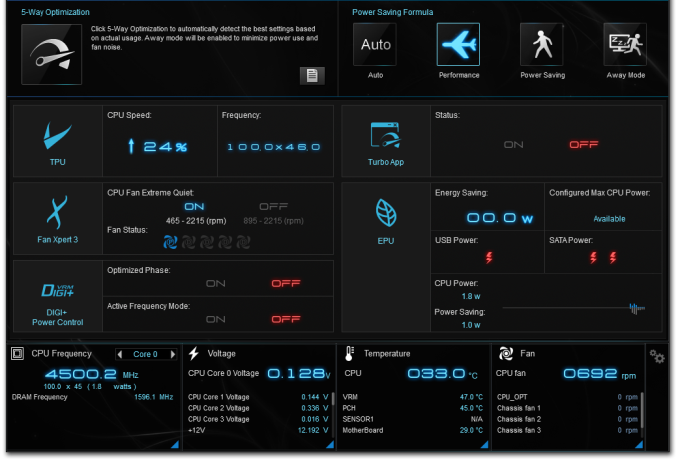
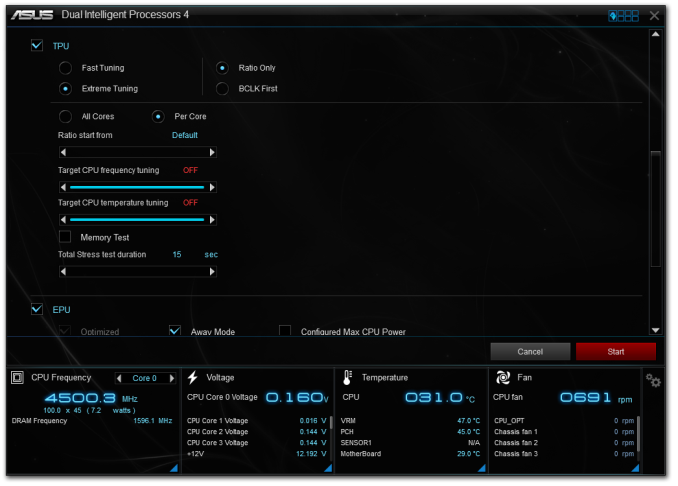
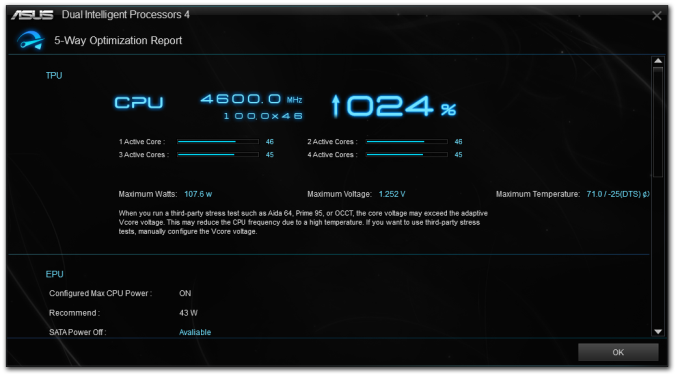
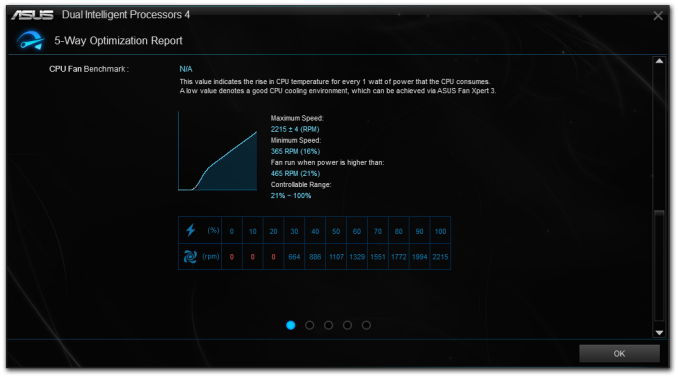
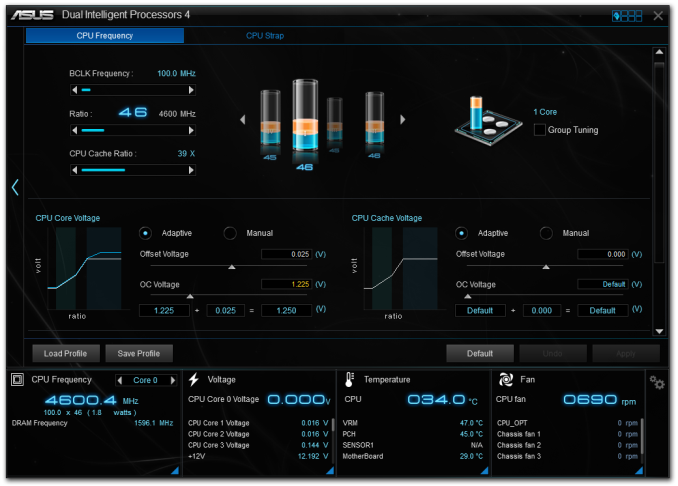
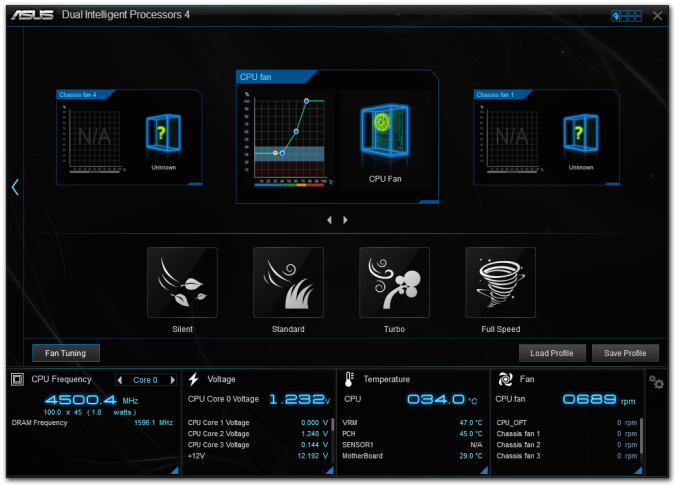
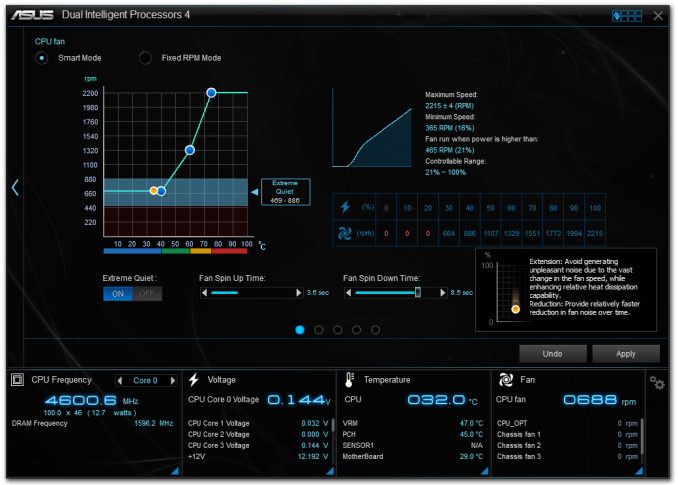
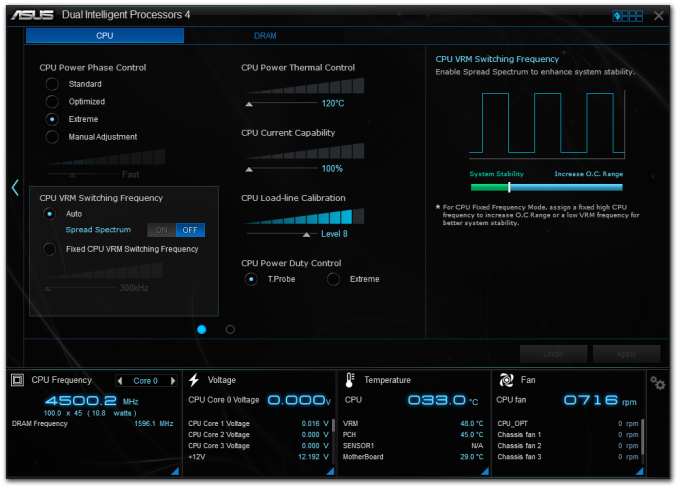
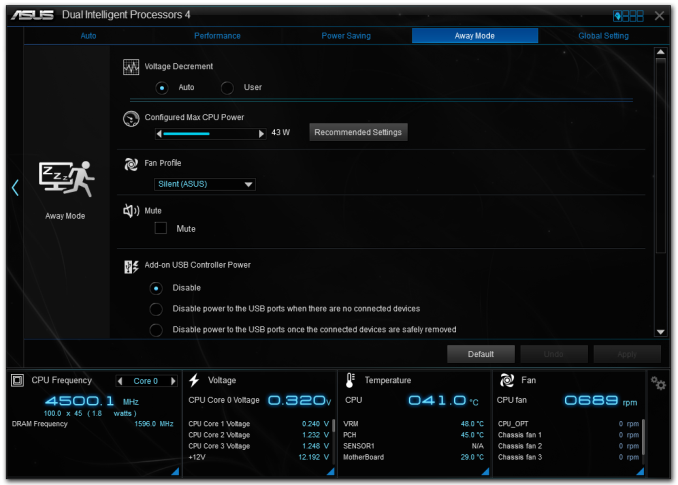
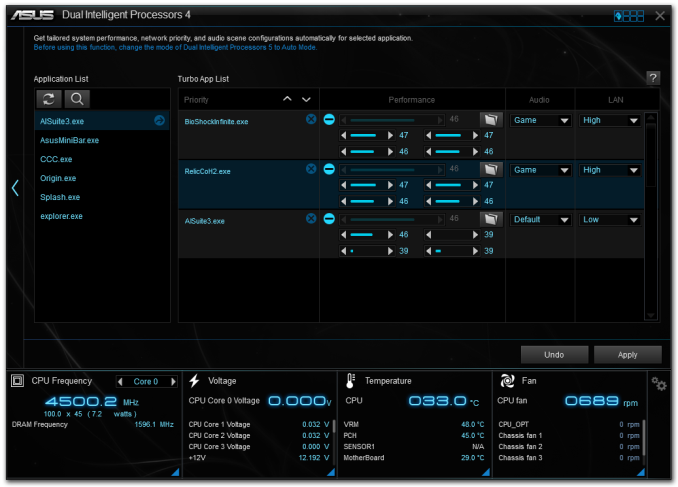
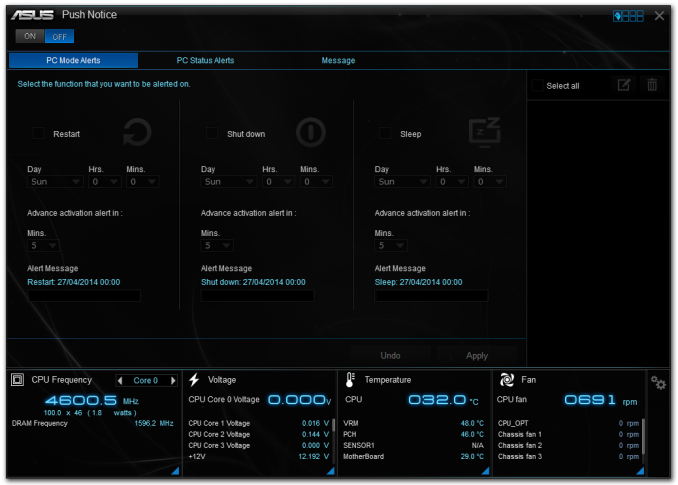














45 Comments
View All Comments
pavlindrom - Friday, May 16, 2014 - link
Lovely tongue-twisting title.LancerVI - Friday, May 16, 2014 - link
Nice board here, as usual, from Asus. I must say though, being a shallow man, that I would love to see and end to this gold design scheme and a return of my beloved blue.Please, for the love of all that is holy; Asus, return the blue scheme.
LancerVI - Friday, May 16, 2014 - link
*an endAlso or all black
Antronman - Friday, May 16, 2014 - link
The blue scheme was ugly, and far too bright. It was also a very cold color.I like this new dull, bronzed gold like on the TUF series, because it's a lot more neutral. You can make any color build you want with it.
LancerVI - Friday, May 16, 2014 - link
If you want neutral, all black would be truly neutral. Gold is just terrible.pixelstuff - Friday, May 16, 2014 - link
I was thinking this was one of the classiest looking color schemes they've ever made.Challenge - Monday, May 19, 2014 - link
Artistically the color choices are perfect and conform with the principles of color choice.superflex - Wednesday, May 21, 2014 - link
Classiest?The 90's called. They want their brass and glass coffee table back.
Flunk - Friday, May 16, 2014 - link
Do you know what we really need from the next generation of Intel processor/chipset? More PCI-E lanes.SirKnobsworth - Friday, May 16, 2014 - link
Rumor has it that the chipsets accompanying Skylake will have 20 PCIe 3.0 lanes, as well as an upgrades DMI 3.0 path to the CPU. As we can already tell, they will be sorely needed.